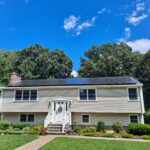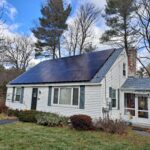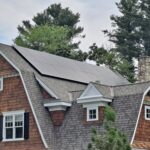There’s been a lot of press about PACE programs in the news lately. It is one of the newest and, in my opinion, the smartest programs available to finance energy improvements like PV. However, these programs are currently under fire from Fannie Mae and Freddie Mac.
Let me first describe what PACE is. It stands for Property Assessed Clean Energy. PACE is a special financing arrangement run by a municipality where energy retrofits are paid through an annual special tax on the homeowner’s property tax bill, typically repaid over 15 or 20 years. City governments would obtain the funding through the sale of bonds to investors.
PACE allows energy retrofits to be attached to the home, not the borrower. Many homeowners don’t want to make the commitment for solar or towards energy efficiency because they aren’t sure how long they will be in their home. In addition, these improvements usually require a large cash outlay upfront. PACE gives a lot of flexibility by spreading that cost.
The earliest PACE program was introduced in Berkeley, California and was called the “Berkeley FIRST” program. Berkeley completed the pilot program for FIRST in November 2009, approving and completing thirteen solar installation projects. The program gained huge popularity. Sixteen states have since passed legislation that would allow municipalities to create PACE programs, including California, Colorado, Illinois, Louisiana, Maryland, Nevada, New Mexico, New York, North Carolina, Ohio, Oklahoma, Oregon, Texas, Virginia, Vermont, Wisconsin.. The program even garnered the Vice President’s attention. Joe Biden pitched to make Berkeley FIRST available nationwide and funded through the Recovery Act. This hasn’t yet been sent to Congress or signed in to law. First, PACE will have to deal with another adversary, Fannie Mae and Freddie Mac.
Fannie Mae and Freddie Mac are resisting PACE programs because they are worried about its implication on customers’ existing mortgages. The debt from PACE would be considered senior to existing debt, which means that if the homeowner defaults on their loans, they would first off PACE loans before they pay any of their mortgage. Property tax assessments have always been deemed senior to home mortgages, but this was for before homeowners could use the assessment for optional energy improvements. Fannie and Freddie have issued lender guidance letters that say that PACE is incompatible with their mortgages. This has ignited a fury from government officials and the general public alike. The argument is that most of these energy improvements have a short payback period and will be cash positive immediately because utility savings should outweigh increases to the property assessment. If anything, supporters of PACE believe that homeowners who opt for these retrofits should be even better positioned to pay their mortgages.
I have to agree with the supporters of PACE. It is one of the most viable ways to increase adoption of renewable energy and energy efficiency retrofits. PACE also allows energy improvements to be more accessible to the middle class who usually would not be able to afford the upfront investment. If you agree. please join Vote Solar in their campaign to urge Congress to remedy the criticism from Fannie Mae and Freddie Mac.








thanks for promoting PACE it is an essential part of any energy policy
Thank you for the comments on PACE. This program will do more to benefit the job market and sustain our economy and lifestyles than any other program available today.
Pingback: Homeowners Want PACE Financing — BRIGHTSTAR SOLAR
Thanks for sharing. I read many of your blog posts, cool, your blog is very good.
cqowoenia лучшая платформа для игры на деньги Play
70918248
References:
anabolic steroid pills for sale [Diane]
70918248
References:
Best Cutting steroids (fatims.org)
маркетплейс аккаунтов соцсетей платформа для покупки аккаунтов
площадка для продажи аккаунтов купить аккаунт с прокачкой
маркетплейс аккаунтов продажа аккаунтов соцсетей
заработок на аккаунтах магазин аккаунтов
магазин аккаунтов безопасная сделка аккаунтов
аккаунт для рекламы биржа аккаунтов
заработок на аккаунтах покупка аккаунтов
маркетплейс аккаунтов соцсетей продажа аккаунтов соцсетей
биржа аккаунтов профиль с подписчиками
перепродажа аккаунтов маркетплейс для реселлеров
магазин аккаунтов социальных сетей https://prodat-akkaunt-online.ru
продать аккаунт купить аккаунт
биржа аккаунтов продажа аккаунтов
Secure Account Sales Account Acquisition
Sell Account Sell accounts
Account Selling Service Gaming account marketplace
Spot on with this write-up, I truly believe this site needs a great deal more attention. I’ll
probably be back again to read more, thanks for the
info!
Here is my web blog – nordvpn Coupons inspiresensation
350fairfax nordvpn cashback
I pay a quick visit every day some sites and blogs to read posts,
but this website provides feature based writing.
продать аккаунт akkaunt-magazin.online
продажа аккаунтов https://akkaunty-optom.live
продажа аккаунтов https://online-akkaunty-magazin.xyz
маркетплейс аккаунтов магазины аккаунтов
маркетплейс аккаунтов соцсетей kupit-akkaunt.online
buy a facebook account https://buy-adsaccounts.work
facebook ads accounts https://buy-ad-accounts.click/
buy facebook account for ads https://buy-ad-account.top
buy a facebook account cheap facebook account